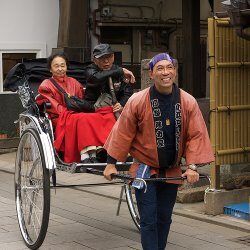Japanese Culture and History: History of the Samurai, Bushido Code of the Samurai signed with blood, Samurai Women, Shoguns, and Japanese swords.
The Samurai class of warriors dominated Japanese Culture And History for 700 years.
Being a Japanese warrior meant that you lived by the Bushido code of the Samurai. It was the Samurai lifestyle.
Japan Culture: Samurai Warriors
When you think of the Samurai warriors what normally comes to mind is honor, loyalty, and devotion. The Samurai Bushido code was extreme. The Japanese warriors swore loyalty to their lord in a very dramatic ceremony. The ‘contract’ was signed with the warrior’s blood and the document was burned, then the ashes were mixed into water and drank.
The devotion between Japanese warriors and their master (daimyo) was so great that Ancient Samurai warriors committed suicide when their daimyo was killed.
The most famous of the Ritual, the Samurai ritualistic suicide, Seppuku, was done when losing the battle. For the Japanese Samurai warrior Surrender was not an option. Fighting to death or suicide were the only options. Suicide was considered honorable.
The Japanese warrior would stick his Samurai sword in his stomach.
Japanese Culture And History In The 16th Century
During the 16th century, the Tokugawa shoguns adopted a policy of isolation. They banned all international trade and the Christian missionaries were thrown out of Japan.
The western culture and customs threatened their Authority and control. They believed they could cut Japan from the outer world and in that way keep their power.
By 1853, Commodore Perry of the U.S. Navy sailed his fleet into a port near Tokyo and forced the shogun to cancel the isolation of Japan. All the progress made by the western world between 17th and 19th century was unknown in Japan. The Japanese maintained the feudal system all that time, Non of the industrialization of the west was familiar to them.
The Tokugawa shoguns were replaced quickly, and Japan had to catch up with the rest of the world.
Japan History In Modern Times
The Japanese new emperor, Emperor Meiji, was only 16 years old when he came to power. It seems very unwise to put a 16 year old teenager as the leader of a country in trouble, but he turned out to be the right person at the right time.
He created a huge industrial and military progress in less than 10 years. He transformed the Ancient Japanese Culture from a feudal society to an industrialized country. He started a compulsory military service.
As a result, the Samurai were left without a position for the first time.
The progress was so fast and so extreme that Japan became a leading military force. Japan started conquering territories in the countries surrounding her – Russia, Korea and China.
Japan’s growing power made the Americans and the British feel a bit uneasy.
Around that interesting time emperor Meiji died. His son and grandson followed his line of extreme nationalism.
The climax was the attack on the US naval base in Pearl Harbor Hawaii (1941) that brought the United States to declare world war 2. Japanese history was at a turning point. After a long fight the United States wiped out Hiroshima and Nagasaki with two atomic bombs. The bombs killed approximately 130,000 people instantly in Japan. The defeat forced Emperor Hirohito to surrender to the United States.
The Americans allowed the emperor to remain in his position, because they were concerned of panic among the Japanese people.
After World War 2 Japanese cities were in ruins. Japan lost 2 million people during World War 2. To follow the American demands after World War 2, Japanese army was dismantled. The emperors’ role was declared symbolic and Japan adopted a democratic constitution for the first time. The feudal system was eliminated and by starting a compulsory military service the Japanese warriors were left without a position.
Carrying authentic Japanese Samurai swords in the streets was forbidden for the first time.
Continue Reading:
Tokyo History
Brief History Of Japan
Return from Japanese Culture And History to Tokyo Attractions
Return from Japanese Culture And History to Culture of Japan




